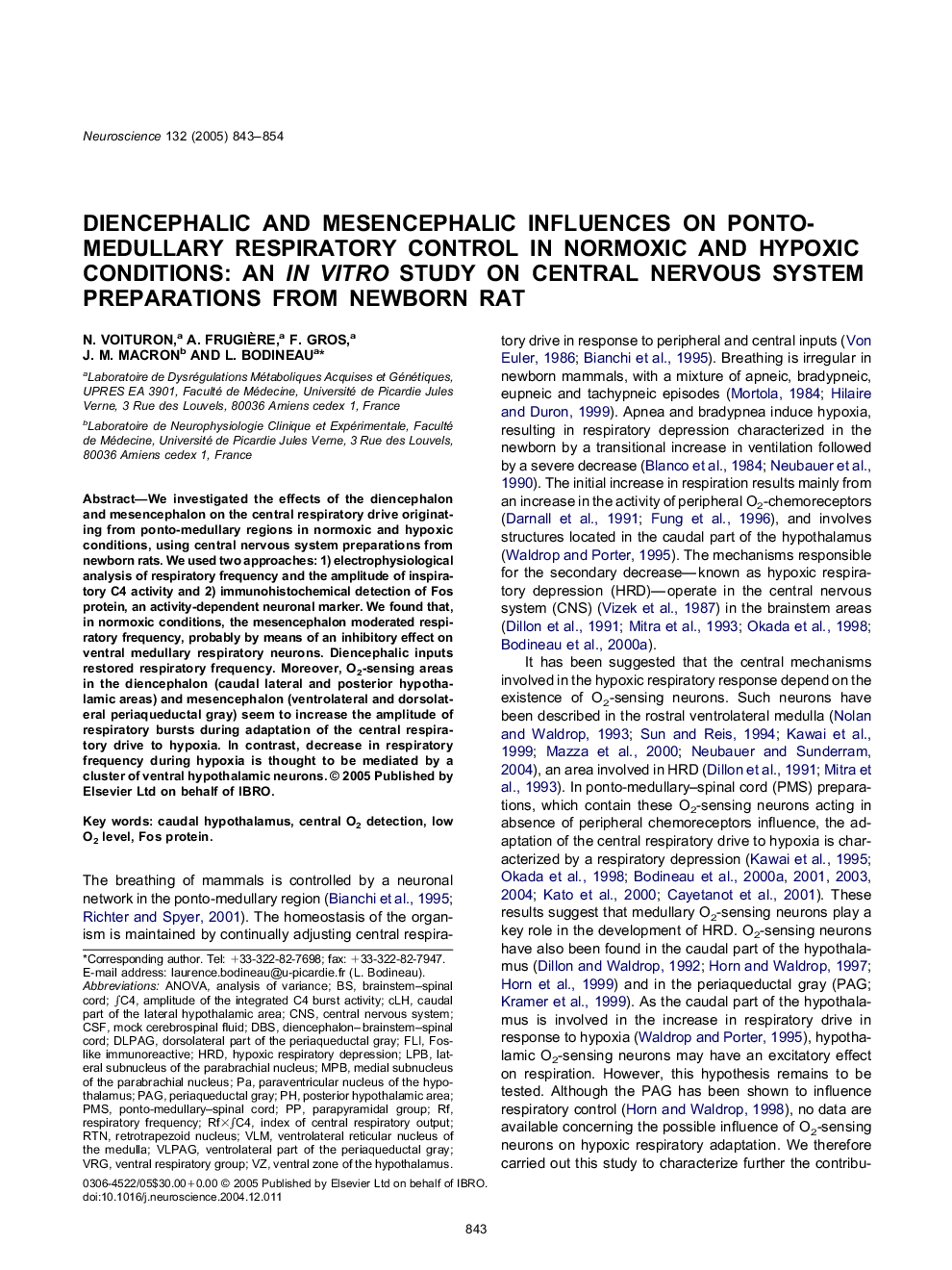| کد مقاله | کد نشریه | سال انتشار | مقاله انگلیسی | نسخه تمام متن |
|---|---|---|---|---|
| 9426738 | 1295932 | 2005 | 12 صفحه PDF | دانلود رایگان |
عنوان انگلیسی مقاله ISI
Diencephalic and mesencephalic influences on ponto-medullary respiratory control in normoxic and hypoxic conditions: An in vitro study on central nervous system preparations from newborn rat
دانلود مقاله + سفارش ترجمه
دانلود مقاله ISI انگلیسی
رایگان برای ایرانیان
کلمات کلیدی
CLHLPBMPBHRDvlPAGFos-like immunoreactiveRTNdlPAGVLMFLIPAGVRGPMSDBSanalysis of variance - تحلیل واریانسANOVA - تحلیل واریانس Analysis of varianceperiaqueductal gray - خاکستری پرآبیCNS - دستگاه عصبی مرکزیcentral nervous system - سیستم عصبی مرکزیrespiratory frequency - فرکانس تنفسیCSF - مایع مغزی نخاعیPosterior hypothalamic area - منطقه هیپوتالاموس پشتیparaventricular nucleus of the hypothalamus - هسته پروانه مرکزی هیپوتالاموسRetrotrapezoid nucleus - هسته ی Retrotrapezoidcaudal hypothalamus - هیپوتالاموس کبدیFos protein - پروتئین FOSVentral respiratory group - گروه تنفسی انسدادی
موضوعات مرتبط
علوم زیستی و بیوفناوری
علم عصب شناسی
علوم اعصاب (عمومی)
پیش نمایش صفحه اول مقاله

چکیده انگلیسی
We investigated the effects of the diencephalon and mesencephalon on the central respiratory drive originating from ponto-medullary regions in normoxic and hypoxic conditions, using central nervous system preparations from newborn rats. We used two approaches: 1) electrophysiological analysis of respiratory frequency and the amplitude of inspiratory C4 activity and 2) immunohistochemical detection of Fos protein, an activity-dependent neuronal marker. We found that, in normoxic conditions, the mesencephalon moderated respiratory frequency, probably by means of an inhibitory effect on ventral medullary respiratory neurons. Diencephalic inputs restored respiratory frequency. Moreover, O2-sensing areas in the diencephalon (caudal lateral and posterior hypothalamic areas) and mesencephalon (ventrolateral and dorsolateral periaqueductal gray) seem to increase the amplitude of respiratory bursts during adaptation of the central respiratory drive to hypoxia. In contrast, decrease in respiratory frequency during hypoxia is thought to be mediated by a cluster of ventral hypothalamic neurons.
ناشر
Database: Elsevier - ScienceDirect (ساینس دایرکت)
Journal: Neuroscience - Volume 132, Issue 3, 2005, Pages 843-854
Journal: Neuroscience - Volume 132, Issue 3, 2005, Pages 843-854
نویسندگان
N. Voituron, A. Frugière, F. Gros, J.M. MacRon, L. Bodineau,